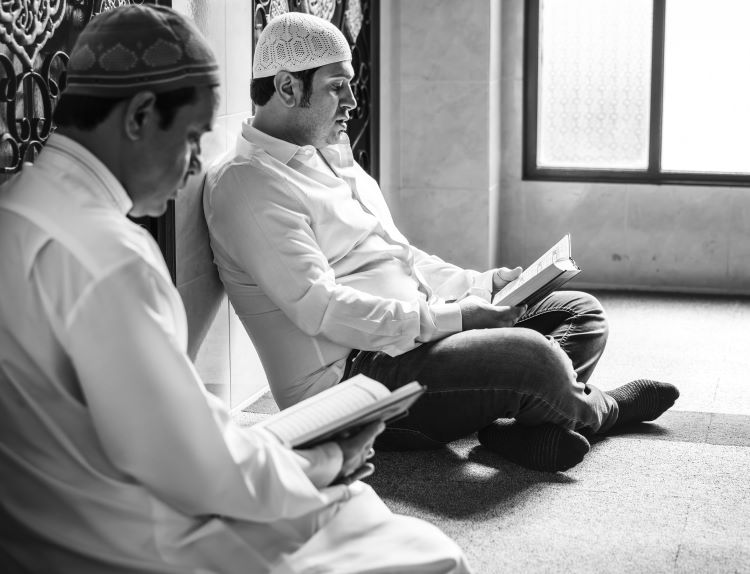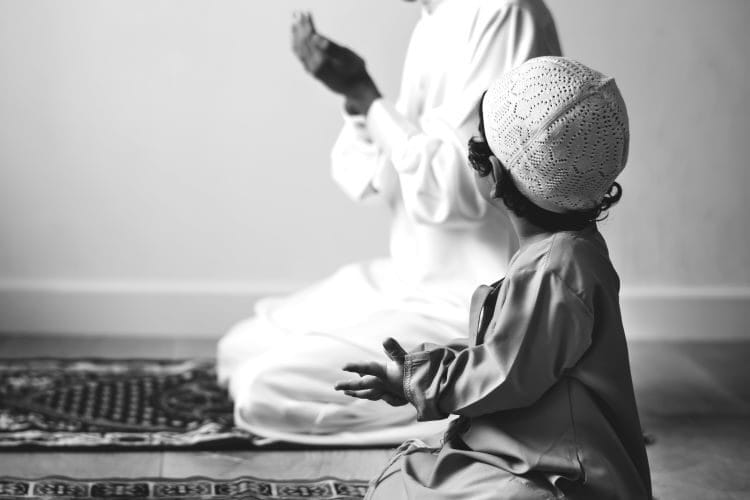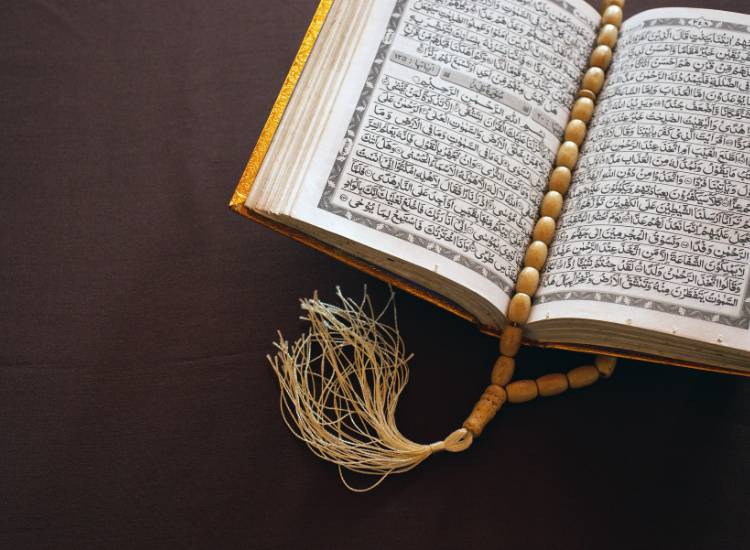The Quran, the holy book of Islam one of miracles of prophet Muhammed, is revered by millions of Muslims around the world. It is regarded as the literal word of God (Allah) as revealed to the Prophet Muhammad (PBUH) over a period of approximately 23 years.
One common question that arises among those studying or exploring the Quran is, “How many pages in Quran?” This question, while seemingly straightforward, has several nuanced answers depending on various factors.
Table of Contents
ToggleHow Many Pages In Quran?
The most commonly referred to version of the Quran in the context of pagination is the Madani Mushaf, which consists of 604 pages. Understanding the importance of learning and teaching Quran helps students appreciate why consistent reading and memorization matter.
This pagination is standard in many printed copies of the Quran and is used for consistency in recitation and memorization. Beginners can start with online hifz program to memorize effectively, while students wanting to perfect pronunciation can join a read Quran with tajweed online course. Adults can benefit from online Quran classes in USA, and advanced learners can pursue learn tajweed with Ijazah online for certification and mastery.
“Those to whom We have given the Book recite it with its true recital. They [are the ones who] believe in it. And whoever disbelieves in it – it is they who are the losers.”
ٱلَّذِينَ ءَاتَيْنَٰهُمُ ٱلْكِتَٰبَ يَتْلُونَهُۥ حَقَّ تِلَاوَتِهِۦٓ أُو۟لَٰٓئِكَ يُؤْمِنُونَ بِهِۦ وَمَن يَكْفُرْ بِهِۦ فَأُو۟لَٰٓئِكَ هُمُ ٱلْخَٰسِرُونَ
Surah AL Baqraa (2:121)
The Beginning Of The Quran Revelation
The beginning of the Quran revelation marks a significant event in Islamic history, and it occurred in the year 610 CE.
The revelation began during the month of Ramadan, on a night known as Laylat al-Qadr (the Night of Power), when the Prophet Muhammad (PBUH) was meditating in the Cave of Hira, located on the Mountain of Light (Jabal al-Noor) near Mecca.
According to Islamic tradition, the Angel Jibril (Gabriel) appeared to Muhammad and delivered the first verses of the Quran. The encounter is described as follows:
- The Appearance of Angel Jibril: Muhammad was alone in the cave when he suddenly saw the angel. Jibril embraced him tightly and commanded him to “Read” (or “Recite”).
- The First Revelation: Muhammad replied that he could not read. Jibril embraced him again and repeated the command. This happened three times, after which the angel revealed the first verses of the Quran from Surah Al-Alaq (96:1-5):
- “Read in the name of your Lord who created
- Created man from a clinging substance.
- Read, and your Lord is the most Generous
- Who taught by the pen
- Taught a man that he knew not.
- Muhammad’s Reaction: Overwhelmed by the experience, Muhammad returned home, trembling and deeply shaken. He sought comfort from his wife, Khadijah, who reassured him and took him to her cousin, Waraqah ibn Nawfal, a Christian scholar.
- Waraqah ibn Nawfal’s Confirmation: Waraqah confirmed that the being who appeared to Muhammad was indeed the Angel Jibril, the same angel who had appeared to Moses. He acknowledged that Muhammad had been chosen as a prophet to deliver God’s message to humanity.
This event marked the beginning of a series of revelations that continued over 23 years, ultimately forming the Quran. These revelations occurred at various times and circumstances, addressing different aspects of faith, law, guidance, and morality.
Muhammad’s role as the final prophet was thus established, and he began preaching the message of Islam to his people.

Comparing the Page Counts of the Quran with and without Translations
| Quran Edition | Page Count Without Translations | Page Count With Translations |
| Standard Arabic Quran | 604 pages | — |
| Arabic Quran with English Translation | — | 800 pages |
| Arabic Quran with Multiple Language Translations | — | 1000 pages |
How Is The Quran Organized?
The Quran is universally recognized with 114 surahs (chapters) and is divided into 30 juz’ (sections) for ease of recitation. However, there are some regional practices in terms of verse division and other minor aspects.
Pakistani Divisions
- Juz’ (Sections):
- The Quran is divided into 30 equal parts (juz’), enabling Muslims to complete its recitation in one month, especially during Ramadan.
- This division is consistent globally, including in Pakistan.
- This is the answer to how many pages are in quran
- Ruku (Sections within Surahs):
- A distinctive feature of the Pakistani Quran is the division into ruku.
- There are about 540-558 ruku in the Quran.
- Each ruku represents a thematic section within a surah, aiding in recitation and understanding, especially during communal prayers.
- Manzil (Divisions for Recitation):
- The Quran is also divided into 7 manzil (stations) to facilitate its recitation over a week.
- This division is commonly used in the Indo-Pak region for regular recitation.
- Numbering and Verse Division:
- While the total number of verses (6,236) remains the same, the exact numbering and division can vary slightly. The Pakistani script may have minor differences in where verse breaks occur compared to other scripts.
Middle Eastern Divisions
- Juz’ (Sections):
- The Quran is divided into 30 juz’, just as in Pakistan, for similar reasons.
- so if you ask about how many pages in each juz in quran? The answer will be 20 pages for Madena Mushaf.
- Hizb (Subdivisions within Juz’):
- Each juz’ is further divided into two ahzab (plural of hizb), resulting in 60 hizb in total.
- This division helps in more manageable daily recitation portions.
- Rubu’ (Quarter Hizb):
- Each hizb is further divided into quarters, known as rubu’. This results in 240 rubu’ in the entire Quran.
- These divisions are common in the Middle Eastern Quran copies and are marked to help with recitation.
- Ruku (Sections within Surahs):
- While the ruku division is more prominent in South Asian scripts, it is also present in Middle Eastern Qurans but is less emphasized.
- The ruku count may differ slightly due to variations in thematic grouping.
- Numbering and Verse Division:
- The Uthmani script, commonly used in the Middle East, might have slight differences in verse breaks compared to the Indo-Pak script.
- The Uthmani script follows a standardized system adopted widely for consistency across printed copies.

Summary Of Key Differences
- Ruku: More emphasized and systematically divided in Pakistani Qurans.
- Hizb and Rubu’: Prominently marked in Middle Eastern Qurans for detailed subdivisions.
- Script and Calligraphy: Pakistani Qurans often use the Indo-Pak Naskh script, while Middle Eastern Qurans use the Uthmani script.
Both the Pakistani and Middle Eastern divisions aim to facilitate ease of recitation, memorization, and understanding, with regional practices reflecting cultural and historical influences.
“Had We sent down this Quran upon a mountain, you would have seen it humbled and coming apart from fear of Allah. And these examples We present to the people that perhaps they will give thought.”
لَوْ أَنزَلْنَا هَٰذَا ٱلْقُرْءَانَ عَلَىٰ جَبَلٍ لَّرَأَيْتَهُۥ خَٰشِعًا مُّتَصَدِّعًا مِّنْ خَشْيَةِ ٱللَّهِ وَتِلْكَ ٱلْأَمْثَٰلُ نَضْرِبُهَا لِلنَّاسِ لَعَلَّهُمْ يَتَفَكَّرُونَ
Surah AL Hasher (59:21)

How Many Surahs In The Quran?
After we discuss how quran pages total, the Quran is comprised of 114 surahs, which are chapters that vary in length and thematic content. Each surah is a collection of verses, known as ayat, and these chapters together form the complete text of the Quran.
The surahs are ordered not chronologically but generally by length, with longer surahs appearing at the beginning and shorter ones towards the end.
This structure is designed to provide guidance and wisdom on a wide range of topics, from spiritual and moral teachings to practical aspects of daily life.

Memorizing And Reciting The Quran
Memorization and recitation are central to the practice and reverence of the Quran. The tradition of memorizing the Quran, known as Hifz, holds a significant place in Islamic culture. Individuals who have memorized the entire Quran are honored with the title of Hafiz.
This practice not only preserves the text but also serves as a means of spiritual enrichment and discipline.
Recitation, or Tilawah, is equally important. The Quran is meant to be recited with precise pronunciation and intonation, guided by the rules of Tajweed.
This ensures that the recitation remains true to the original Arabic and preserves the beauty and meaning of the text. The melodic recitation of the Quran can deeply move listeners and provides a profound connection to the divine.
Memorization and recitation are often taught together, as mastering the pronunciation and rhythm of the Quranic verses aids in memorization.
Online Quran courses, like those offered by Madrasat El-Quran, provide structured programs for both memorization and recitation, ensuring that learners can achieve proficiency and spiritual connection with the sacred text and learn how many page in Quran.
How Many Versions Of The Quran Are Out There?
After learning how many pages are in the Quran there is essentially only one version of the Quran in terms of its Arabic text, as the Quran has been preserved in its original form since it was revealed.
However, there are different Qira’at (recitations) of the Quran, which are slight variations in pronunciation, intonation, and sometimes minor differences in wording, all of which are traceable to the Prophet Muhammad’s (PBUH) companions. These Qira’at are all considered authentic and legitimate.
The most widely known and recited Qira’at is the Hafs ‘an ‘Asim, especially in the Muslim world today. Other recognized Qira’at include Warsh, Qalun, and Al-Duri, among others.
Each Qira’a is a valid way of reciting the Quran and has been transmitted through an unbroken chain of reliable narrators.
In addition to the different Qira’at, there are numerous translations of the Quran into various languages.
Each translation is considered an interpretation of the meanings of the Quran rather than the Quran itself, as the original Arabic text is the actual scripture.
Therefore, while the translations can vary, the original Arabic text remains consistent and unchanged across all versions.

Can My Children Learn The Quran Online?
Yes, your children can learn the Quran online through Madrasat El-Quran’s online Quran classes for kids and also will learn how many pages does the Quran have. Quran teaching for children requires well-trained and qualified teachers who can handle beginners while instilling a love for the Quran in their hearts.
“Learn Quran for kids” courses can be a wonderful gift you offer your children at a very young age. Online Quran for Children courses help them learn and progress in their Quranic education without leaving the house or burdening them with extra travel.
If you’ve been struggling with Quran recitation or feel unsure about your pronunciation, now is the perfect time to join Quran Tajweed classes online. These courses are designed to help you master the rules of Tajweed, ensuring that you recite the words of Allah with accuracy and confidence. Whether you’re a beginner or want to refine your recitation, online tajweed course with certificate provide one-on-one guidance, flexible schedules, and expert instruction all from the comfort of your home. Start your journey today and connect more deeply with the Quran through proper Tajweed.
In conclusion, the page count of the Quran can vary due to factors like script, font size, and edition, but the most commonly used edition spans over 600 pages.
The Quran’s unique structure, divided into Surahs and Ayahs, facilitates memorization and recitation, which are highly significant in Islamic culture.
Beyond its page count, the Quran has an immeasurable impact on millions of lives, serving as a spiritual compass and a source of enlightenment.
If you’re wondering how many pages are in the Quran, it’s essential to understand its significance beyond just its physical form. and you should know that how many pages is the Quran in English differs from the Arabic.
FAQs About How Many Pages In Quran
Can Non-Muslims Read the Quran?
Yes, non-Muslims are allowed to read the Quran. It is encouraged for those seeking knowledge or wanting to understand Islamic teachings better. Many translations and interpretations of the Quran are available in various languages to facilitate its understanding by people of different faiths and cultures.
Why do Different Editions of the Quran have Varying Page Counts?
Different editions of the Quran may have varying page counts due to differences in font size, script style, and the physical dimensions of the book. Some editions are designed to be more compact for portability, resulting in smaller text and more pages.
What is the Significance of the Quran’s Page Count?
The page count of the Quran primarily depends on the formatting and layout chosen by the publisher. The content remains the same across different editions, with variations only in how the text is presented.
Is the Quran always the same length in all editions?
No, the Quran can vary in length across different editions. The number of pages depends on factors like font size, script style, and physical dimensions of the book. Compact editions designed for portability may have smaller text and more pages, while larger print editions may have fewer pages.
How Many Pages is Surah Baqarah?
The number of verses in Surah Al-Baqarah is 286, and it spans 48 pages in the Quran.
How long is the Quran pages?
The Quran consists of 604 pages in its standard Arabic version. However, the number of pages may vary in translated versions of the Quran.
How many chapters does the Quran have?
The Quran contains 114 chapters (suras). It includes prayers, moral guidance, historical narratives, and promises of Paradise. The first chapter, Al-Fatiha, is a short prayer and is the most widely recited passage in the Quran. The chapters are organized in descending order of length.
How Many Pages In 15 Lines Quran?
In a Quran printed with 15 lines per page, the total number of pages is 611 for the Majidi print, while the Othmani print consists of 604 pages.
How Many Pages Is The Quran In English?
The number of pages in the English translation of the Quran typically varies between 100 and 580 pages. This variation is due to different publications and translation styles, so there is no standard page count. For instance, Atbae Alrabi’s version has 300 pages, while the Modern Clear English Quran has 116 pages.

Madraset El Quran Academy
Madraset Elquran Academy is a world-class platform for learning Quran, Arabic, and Islamic Studies, recognized globally for its excellence. As one of the leading online Quran schools, we offer personalized one-on-one sessions with expert native Egyptian tutors, providing high-quality education for learners of all levels.



